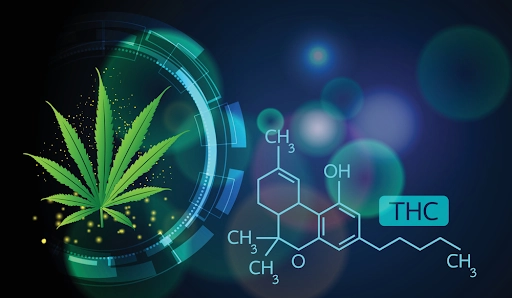Neuropathy, a result of nerve damage, is a common nerve-related chronic condition affecting millions worldwide. It can cause chronic pain, numbness, tingling, and other uncomfortable symptoms. While the exact causes of neuropathy vary from person to person, many are turning to cannabis for relief. But how does it work? Let’s look at the science behind why medical marijuana (MMJ) helps with neuropathy.
How Marijuana Helps with Neuropathic Pain
The active compounds in marijuana are known as cannabinoids, specifically delta-9-tetrahydrocannabinol (THC) and cannabidiol (CBD). These compounds have been found to have potent anti-inflammatory and analgesic properties. In other words, they can help reduce inflammation and provide pain relief.
This occurs due to cannabinoids like THC and CBD binding to specific receptors throughout the peripheral nervous system and brain. The benefits cannabis offers include a reduction in pain, numbing, and tingling, mainly in patients with diabetic neuropathy.
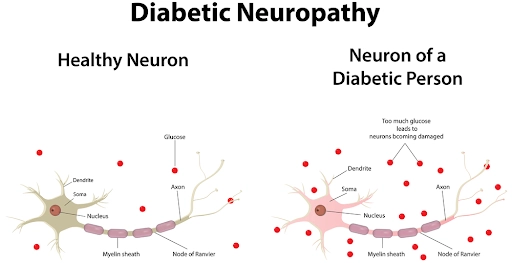
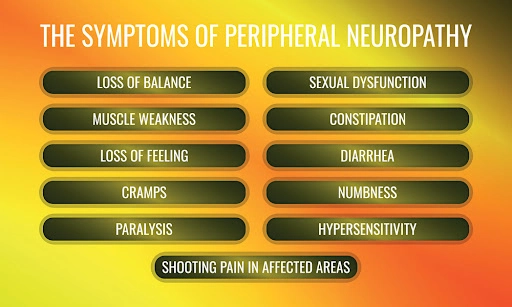
Research study shows cannabis helps treat short-term neuropathic pain
In one study researched for short-term treatment of neuropathic pain, cannabis was effective and considered safe. In addition to providing relief from neuropathic pain, there is evidence that cannabis can effectively treat many of the underlying symptoms associated with neuropathy. For example, cannabis has been found to help reduce inflammation caused by diabetes and autoimmune disorders, which are known contributors to neuropathic pain. Marijuana could potentially help treat the cause and effect of symptoms of the underlying condition.
Lastly, cannabis has also helped manage anxiety associated with neuropathy. Studies indicate that CBD may be particularly effective in reducing anxiety by helping regulate mood swings and calming racing thoughts. Many consider it an excellent option for those looking for natural ways to manage their anxiety and stress without relying on prescription drugs or other potentially dangerous treatments.

What is Peripheral neuropathy?
Peripheral neuropathy involves damage to the peripheral nervous system. This system has a communication network that sends signals through all the parts of our bodies, including the brain and spinal cord. For example, peripheral nerves send signals to the central nervous system (CNS), such as if your feet are cold or hot.
Nerves are disrupted in three ways:
- loss of signals (like a wire that has its signals disrupted)
- distorted signaling (like some with their hand over their mouth)
- Message distortion (signals don’t come through to deliver the message with clarity)
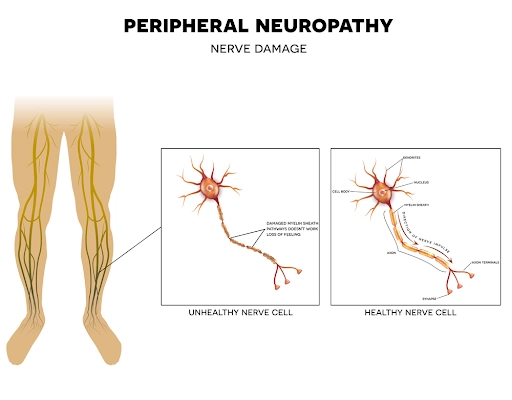
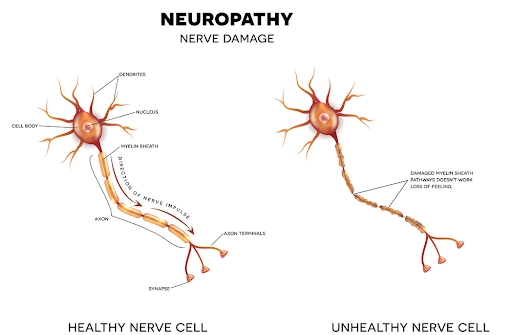
Neuropathy is an approved medical condition for a marijuana card
Tens of thousands of people are getting relief from their neuropathic pain with cannabis. Numerous studies support this claim. An Illinois medical card allows you to save money compared to buying cannabis recreationally and being subject to substantial taxation, like excise taxes.
Want More information about how to get a same-day medical card in Illinois?
No medication works 100% of the time
Unfortunately, there isn’t a medication that works 100% of the time for people, even cannabis, similar to other medicines. Each patient has to be evaluated by a healthcare provider to consider their unique situation. Everyone that is taking dangerous opioids should consider marijuana as an alternative. MMJ has been an effective treatment for neuropathic pain and its accompanying symptoms for most people.
It’s important to remember that people may react differently regarding their response to cannabis products, consumption methods, and strains. Before adjusting your medication regimen or beginning any new treatments, talk with your primary care physician (PCP), especially if you are already taking medications or have a history of drug abuse or addiction. You don’t want to make your situation worse. Proper guidance from a qualified medical provider will help you decide if marijuana treatment could be an option.
Marijuana relieves various neuropathic pain conditions and other associated symptoms like inflammation without causing severe side effects or complications. One of the most common alternative medications to manage neuropathic pain is opioids which have dangerous side effects and the potential for addiction. If you want to experience the pain reduction effects of cannabis as a medicine, research your medical condition and how marijuana may help you to become well-informed.
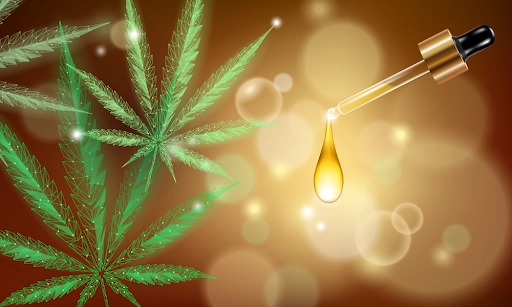
Legal & Medical Disclaimer
The information provided on this blog is for general informational and educational purposes only and is not intended as, nor should it be considered a substitute for, professional medical advice, diagnosis, or treatment. Always seek the advice of your physician or other qualified health provider with any questions you may have regarding a medical condition or treatment and before undertaking a new health care regimen. Never disregard professional medical advice or delay in seeking it because of something you have read on this website.
The content on this blog is provided “as is” and no representations are made that the content is error-free. The website takes no responsibility for errors or omissions in the content of this blog or other websites or resources that may be referenced or linked to herein. The website’s content is not intended to recommend or endorse any specific tests, physicians, procedures, opinions, or other information that may be mentioned on the site.
By using this blog, you agree to the foregoing terms and conditions, which may from time to time be changed or supplemented by this website. If you do not agree to the foregoing terms and conditions, you should not use this blog.
The information provided on this blog is for general informational and educational purposes only and is not intended as, nor should it be considered a substitute for, professional medical advice, diagnosis, or treatment. Always seek the advice of your physician or other qualified health provider with any questions you may have regarding a medical condition or treatment and before undertaking a new health care regimen. Never disregard professional medical advice or delay in seeking it because of something you have read on this website.
The content on this blog is provided “as is” and no representations are made that the content is error-free. The website takes no responsibility for errors or omissions in the content of this blog or other websites or resources that may be referenced or linked to herein. The website’s content is not intended to recommend or endorse any specific tests, physicians, procedures, opinions, or other information that may be mentioned on the site.
By using this blog, you agree to the foregoing terms and conditions, which may from time to time be changed or supplemented by this website. If you do not agree to the foregoing terms and conditions, you should not use this blog.


